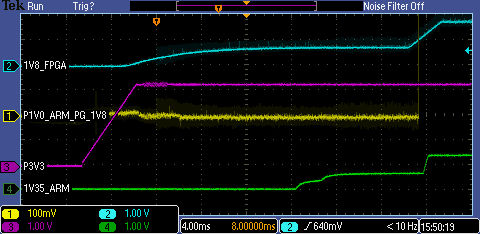Tool/software: WEBENCH® Design Tools
Dear Forum,
I am having issue with LMZ20502 and I hope to get some ideas/suggestions as what could be wrong with my LMZ20502's circuit.
I used the WEBENCH DESIGNER to obtained the circuit for LMZ20502 with 3.3V input and output is 1.35V. The problem I am running into with this circuit that the output started out at 1.2V and it kept rising upto 1.6V and sometimes it got up to 2V. The WEBENCH recommended a 47uF/10V cap and output cap of 22uF/10V. The the feedback pin FB, I used 69.8k and 56k to obtained the Vref voltage at the feedback pin FB.
Thank you in advance for your input,
BR,
Howard


